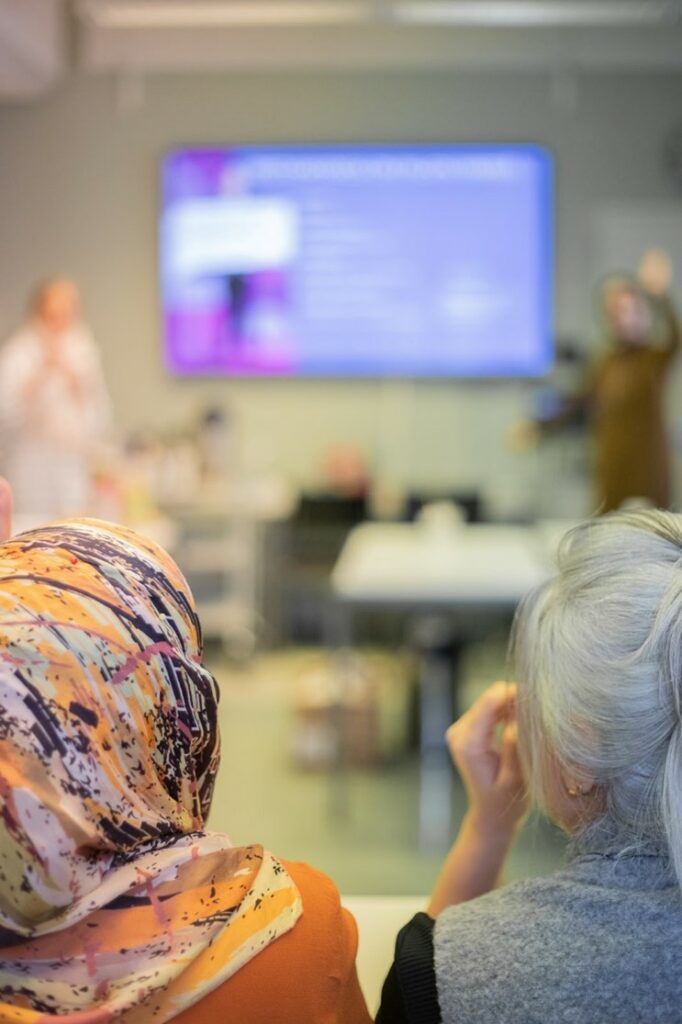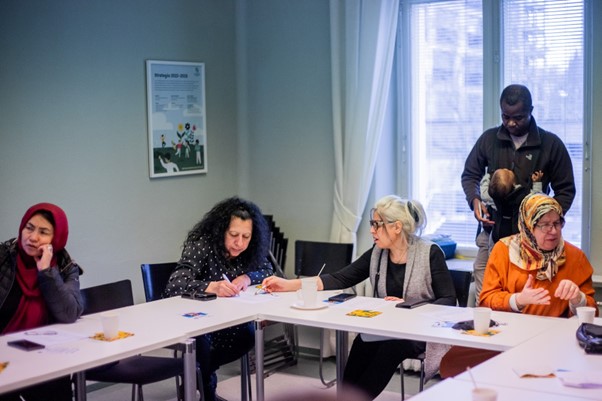On the paths to recognize the subjective dimensions of well-being
In order to help migrants on their path to integration, we need to know what kind of support they need. They have a lot of questions they need answers to. The workshops in Sateenkaari Koto highlighted the importance of tailored learning approaches, the power of artistic expression, and the challenges of language barriers, ultimately revealing the participants’ strong community spirit and determination to actively engage in Finnish society.
What kind of digital skills do I have? What do I want to learn? How could the digital world improve my everyday life and help me to achieve my dreams? These were the questions we were aiming to answer in the workshops held in Sateenkaari Koto learning homes during winter 2024.
To actually grasp these digital themes, I quickly understood that there are more personal questions to answer first. What are my dreams? Where do I want to aim in my life? Do I have to learn more to achieve my dreams? What is it that I don’t understand about Finnish society yet? What is valuable for me in Finnish society and what has helped me on my personal integration path? Before imagining how the digital world provide help for well-being and integration, we had to recognize our individual subjective dimensions of well-being. What is “Having, loving and being” (Eric Allardt) for the clients of Sateenkaari Koto learning home’s clients?

I held six workshops for our clients during January-March with different kinds of approaches. Some workshops were exploring where our clients want to aim with their lives, and what questions they have for achieving their goal. In one workshop clients became experts by experience by imagining a story for a migrant and building a list of how to help this migrant to find their well-being in Finland. We also gathered information about digital skills, emotions towards the digital world, and interests of gaining more digital skills.
As we are different kinds of learners and our minds activate on imagining in different ways, it has been important to build a variety of different kinds of workshops. I have used individual counselling, pairs, small groups, and big groups during this winter. We have done queries, writing tasks and visual arts combined with discussion and writing.
It’s been interesting to see how participants who have difficulties expressing themselves with writing, open to imagining when they get images, pens, brushes, and colours as a tool of expression. Vice versa, participants who don’t find arts as their tool of imagining, open for writing and discussion.
The biggest problem of gaining reliable information from our client’s views is the work language in the workshops. Learning home clients have very different language skills and for now we haven’t used interpreters on our workshops. In some cases, I have had to exclude single query answer or writing the tasks of the gathered data because there was uncertainty of if the participant understood the task in hand. For now, the best way to gain reliable answers is to have discussions included in different workshop tasks.

What I have learned as a project coordinator of Sateenkaari Koto is that our clients have big dreams and lots of willpower. There are many questions they want to find answers to, and their questions are directing them to achieve their dreams. They want to understand more Finnish traditions, history and cultural differences. They want to understand politics, school systems, work culture, hobbies and so much more. Altogether there’s a wish to be more active participant of the society.
Our clients also have great skills with interaction which help them to express themselves even when there’s a struggle to use the Finnish language. They help each other with warmth and kindness, they use online translators to gain the gap between the difficulties of languages, and they are eager to learn new things as a group. Even though we are still at the beginning of the VINCE project, I myself already imagine the time when we get to start to explore the application and do service design with our clients together.
Katja Ollikainen
Project Coordinator
Sateenkaari Koto

